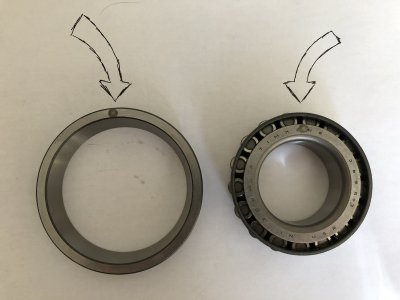- Joined
- Nov 9, 2018
- Messages
- 377
I looked up a Timken 362B and it looks like a typical automotive type tapered roller bearing that costs less than $20.00 each. I don't think they fall into an accuracy class, Andy.
One idea might be to contact Timken and see if they do have accuracy class rated bearings in this size. Since you're already in there, makes sense to just put good bearings in there and I would change the pair if it was me. I have ABEC 3 bearings in my Sherline machines and P5/ABEC 5 angular contact bearings in my mill; my larger lathe has P6 bearings. Run out on all these machines is from 0.0000 to 0.0001" TIR.
Precision bearings make a difference and I would consider them.
I'll see what I can find, and what can afford. Timken has "standard" classes of 4 and 2, and precision classes of 3, 0, 00, and 000. No idea how these classes compare with P/ABEC classes. I do know this bearing is a very common size, and is available from tons of different manufacturers.
It does look like someone replaced the factory standard class-2 bearings with class-0. But unfortunately, the rear bearing shows some damage, both in the race, and from hammer marks on the cone.
I did check runout with the spindle installed, and properly pre-loaded, at the front, it's about 0.0001, and about 0.0003 at the rear. The front looks good, so I think I'll just leave it, as it operates smoothly and quietly, and shows virtually no runout. The higher 0.0003 in the rear might be from damage, I don't know.
I think I might have to call some bearing suppliers, because I'm not having much luck searching for bearings with different classes online.


